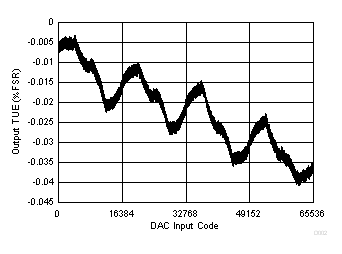ZHCSC70D December 2013 – December 2021 DAC7750 , DAC8750
PRODUCTION DATA
- 1 特性
- 2 应用
- 3 说明
- 4 Revision History
- 5 Device Comparison Table
- 6 Pin Configuration and Functions
- 7 Specifications
- 8 Detailed Description
- 9 Application and Implementation
- 10Power Supply Recommendations
- 11Layout
- 12Device and Documentation Support
- 13Mechanical, Packaging, and Orderable Information
封装选项
机械数据 (封装 | 引脚)
散热焊盘机械数据 (封装 | 引脚)
订购信息
9.2.3 Application Curve
The current output circuit was measured in 0-mA to 24-mA mode using an 8.5 digit digital multimeter to measure the output while driving a 300-Ω load at 25°C. The measured results are illustrated in Figure 9-5. The current output remains within the data sheet specified performance.
The design was also exposed to IEC61000-4 electrostatic discharge, electrically fast transient, conducted immunity, and radiated immunity tests on both the current and voltage outputs. During each of these tests a 6.5 digit digital multimeter, set in fast 5.5 digit acquisition mode, was used to monitor the output. Complete data sets for the voltage and current outputs during these tests are available in the Single-Channel Industrial Voltage and Current Output Driver, Isolated, EMC/EMI Tested Reference Design.
 Figure 9-5 Current
Output TUE vs Code
Figure 9-5 Current
Output TUE vs Code